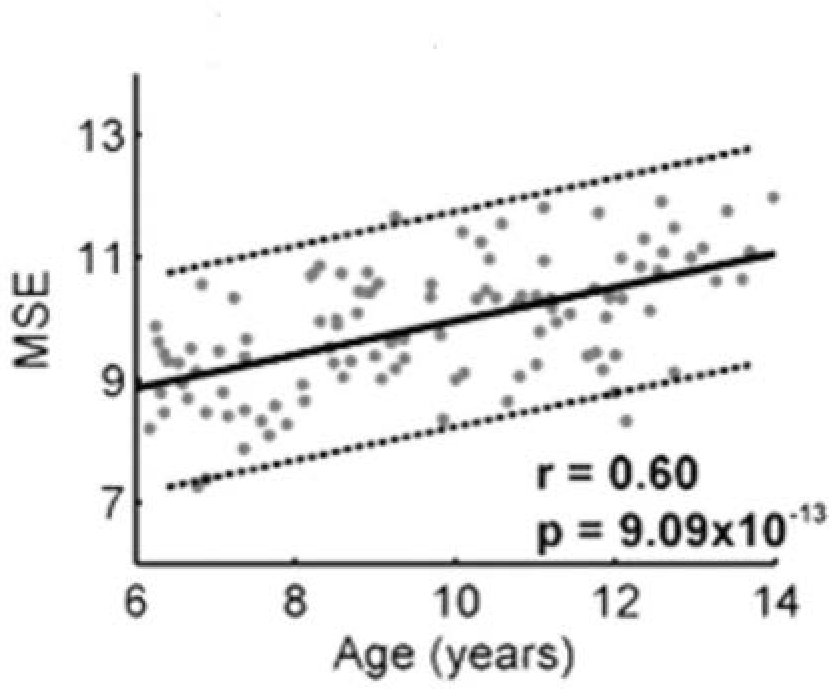Brain signal complexity based individual age prediction method
A prediction method and technology of complexity, applied in the directions of diagnostic recording/measurement, medical science, diagnosis using light, etc., can solve the problems of inability to correspond to the brain network status, and many factors affecting the brain network status, so as to achieve convenient operation and ensure reliability. Sex, the effect of simple testing process
- Summary
- Abstract
- Description
- Claims
- Application Information
AI Technical Summary
Problems solved by technology
Method used
Image
Examples
Embodiment 1
[0019] One embodiment of the present invention provides a method for predicting individual age based on brain signal complexity, including:
[0020] 1) Obtain the transmitted light intensity data of the brain tissue of the subject through the near-infrared imaging system;
[0021] 2) Convert the transmitted light intensity data into brain physiological information data, and calculate multi-scale entropy based on the brain physiological information data;
[0022] 3) Calculate the multi-scale entropy value corresponding to each detection point in the brain area of each subject, and then calculate the corresponding multi-scale entropy value of each brain function network according to the position of each detection point, and then represent all The multi-scale entropy values of the test points are averaged to obtain the multi-scale entropy index based on the brain function network;
[0023] 4) Use support vector regression to predict age: the multiscale entropy index of each ...
Embodiment 2
[0039] This embodiment further illustrates the technical solution of the present invention by enumerating specific experimental data. Specific steps are as follows:
[0040] Near-infrared imaging equipment with wavelengths of 670nm and 830nm was used to collect the resting-state near-infrared imaging light intensity data of 107 healthy subjects, and the subjects were divided into the following three groups according to age: 6-7 years old, 8-10 years old and 11-13 years old, then convert the infrared imaging light intensity data to obtain HbO concentration data, then remove motion artifacts and physiological noise and perform band-pass filter processing, and use the processed HbO concentration data to calculate the multi-scale corresponding to each test point entropy value.
[0041] The time series of sample entropy values of each group of subjects is as follows: figure 1 As shown, the entropy value of each group of samples increases with time; for each time scale, the mult...
PUM
 Login to View More
Login to View More Abstract
Description
Claims
Application Information
 Login to View More
Login to View More - R&D
- Intellectual Property
- Life Sciences
- Materials
- Tech Scout
- Unparalleled Data Quality
- Higher Quality Content
- 60% Fewer Hallucinations
Browse by: Latest US Patents, China's latest patents, Technical Efficacy Thesaurus, Application Domain, Technology Topic, Popular Technical Reports.
© 2025 PatSnap. All rights reserved.Legal|Privacy policy|Modern Slavery Act Transparency Statement|Sitemap|About US| Contact US: help@patsnap.com


